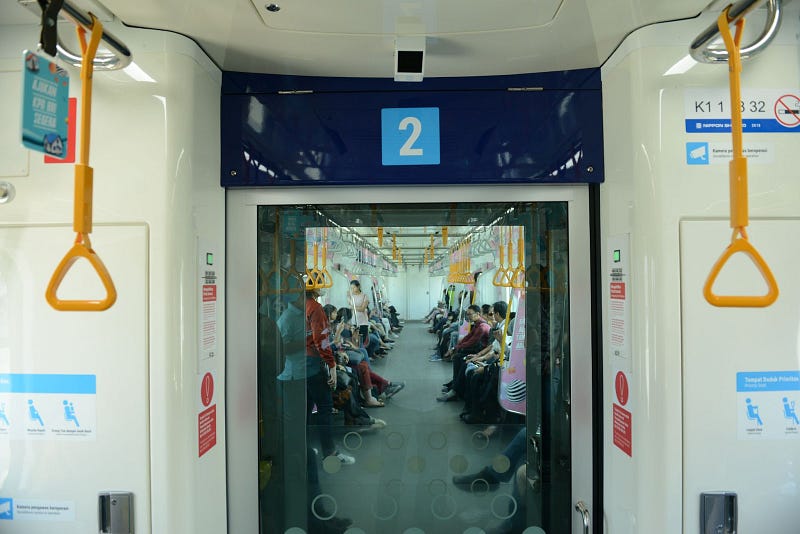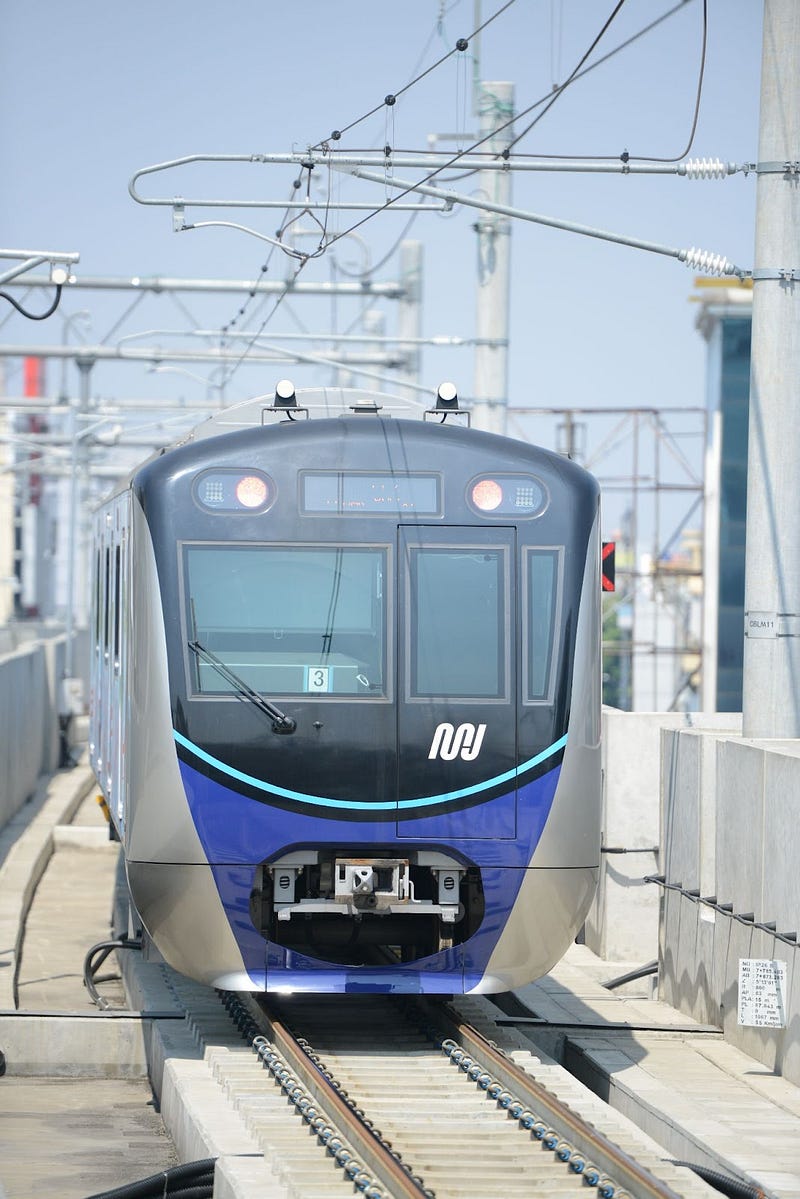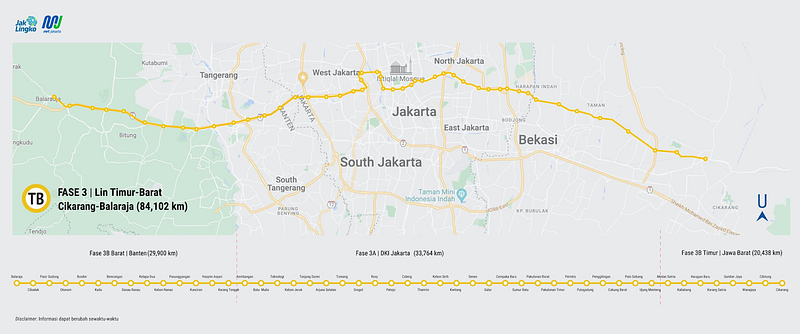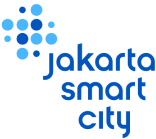This Is How Jakarta Tackle Traffic Jams
Smartcitizen, you are likely familiar with the high number of motorized vehicles that pass through our city. According to data from the Central Statistics Agency (BPS), the number of motorized vehicles in Jakarta continues to increase every year. In 2022, the number of motorized vehicles in Jakarta reached 26.37 million units, which is a 4.39% increase from the previous year. This increase has both positive and negative impacts. On the positive side, it strengthens the automotive industry and people’s purchasing power. However, it also has negative impacts such as increased air pollution and congestion.
To address this issue, the Jakarta Provincial Government is committed to finding effective solutions to deal with the city’s congestion. The Draft Regional Regulation (Raperda) APBD 2023 includes a strategic program to address this issue. This shows the city’s seriousness in dealing with the problem. What steps will be taken? Let’s explore this further in the following article.
Improving Mass Transportation Facilities

To ease Jakarta’s traffic, the government aims to improve mass transportation by integrating it with other modes of transit, using a concept called transit-oriented development. This means Jakarta needs to focus not just on building stations and bus stops, but also creating a seamless blend of transit functions that connect people with other public spaces. By doing this, Smartcitizens will have more options to get around without needing to use private vehicles.
The Jakarta MRT is the first transportation mode to get an upgrade, with phase 2 currently under construction. Phase 2 is made up of phases 2A and 2B, and covers the Bundaran HI — Kota corridor. Phase 2A is around 5.8 kilometers long and has six underground stations (Thamrin, Monas, Harmoni, Sawah Besar, Mangga Besar, Glodok), as well as one station above ground (Kota). As of February 2023, phase 2A construction progress has reached 20.33%. Phase 2B will include Kota, Mangga Dua, Gunung Sahari, and Ancol stations, with a total length of about 5.2 kilometers up to the West Ancol depot. Currently, phase 2B is still in the feasibility study stage.
The next mass transportation mode under improvement is the Jakarta LRT. The construction of phase 1B reaches 6.4 kilometers with the Velodrome to Manggarai route. This will make the Jakarta LRT add five stations (Pemuda, BPKP, Pasar Pramuka, Matraman, and Manggarai). Various things have now been done to make it happen, such as coordination and tender preparation.
Jakarta MRT Development Cooperation

Improving public mobility requires seamless connectivity not only between transportation modes but also between different regions. As such, the DKI Jakarta Provincial Government is collaborating with various local and international partners to develop mass transportation modes.
Countries such as Japan, the UK, and South Korea have expressed interest in contributing to the development of Jakarta’s MRT mass transportation system. In November 2022, Indonesia signed a memorandum of understanding with Japan and the UK, which included three key elements:
- A Memorandum of Cooperation (MoC) between the Indonesian and Japanese governments for the construction of the Jakarta West-East MRT Line Phase 1.
- A Letter of Intent (LoI) between the Indonesian and UK governments to collaborate on the development of Jakarta’s MRT, with a focus on the West-East MRT Phase 2.
- A Memorandum of Understanding (MoU) between the Indonesian and South Korean governments for the construction of phase 4 of the Fatmawati-Kampung Rambutan section.

In addition to international cooperation, the Jakarta Provincial Government is also coordinating with local authorities for the construction of the Cikarang-Jakarta-Balaraja phase 1 (Tomang-Medan Satria) of the East-West MRT route. In February 2023, an agreement was signed between the Acting Jakarta Governor Heru Budi Hartono, West Java Governor Ridwan Kamil, and Plt. Bekasi Mayor Tri Adhianto at Gedung Sate in Bandung, West Java.
Station Area Arrangement Phase 2

Have you ever taken the KRL and got off at Tanah Abang Station? Well, if you notice, it has become tidier around the station, right? It is one of the manifestations to revitalize and organize areas by the DKI Jakarta Provincial Government. This is needed so that the mobilization process becomes smooth and integration between transportation systems becomes easy. Since 2020, the DKI Jakarta Provincial Government has carried out the first phase of regional arrangement at Juanda, Pasar Senen, Tanah Abang and Sudirman Stations.
Arrangement of this area can reduce congestion, because it makes the environment around the station more orderly and organized. The local economy also gets a breath of fresh air, due to the increased mobility of public transportation users. Revitalized facilities present a comfortable, friendly atmosphere, and prioritize the use of public transportation.
After the first phase is completed, second phase area arrangement is carried out at Tebet, Palmerah, Gondangdia, Manggarai, and Jakarta Kota Stations, as the next target. In 2021, Palmerah, Tebet, and Gondangdia Stations have been completed, leaving two more stations that are still in the process of being completed.
Revitalizing Transjakarta Shelters

Have you visited the new Transjakarta bus stop at Bundaran HI yet? The shelter has a new shape, like a cruise ship in the middle of the city!
This bus stop is one of 46 bus stops that have been revitalized throughout 2022. Some other bus stops that have been revitalized and are back in operation are GBK, Balai Kota, Kwitang, and Cikoko — Cawang Station which has been integrated with KRL and LRT stations.
Revitalization aims to prioritize customer convenience and facilitate the interests of community mobility. As a result, various facilities are present to complement the new revitalized bus stops, such as prayer rooms, toilets, retail areas, and various other facilities that are friendly to people with disabilities.
By 2023, PT Transjakarta is targeting 72 more bus stops to be revitalized, out of around 200 bus stops. The revitalized shelters were partly moved to temporary shelters, because some were affected by the construction of MRT phase 2A, resulting in Transjakarta routes also being adjusted.
Read also: Transjakarta routes during MRT construction
U-Turn Closure Trial and One-way System (SSA) Implementation

In addition to public transportation, the DKI Jakarta Provincial Government has further programs to overcome congestion. First, reducing u-turns. The existence of u-turns on several roads in Jakarta is one of the causes of congestion points, because vehicles have to reduce their speed and queues due to excessive vehicle volume.
Therefore, the DKI Jakarta Provincial Government together with Polda Metro Jaya will plan to close 27 u-turns spread across five regions. This closure is carried out in stages and goes hand in hand with the implementation of the second program, which is implementing the One Way System on seven roads.
This policy of closing u-turns on roads that implement the one-way system will be carried out in stages, effective until June 2023. Then an evaluation will be carried out for three months, until finally it will be permanently closed with a water barrier. Hopefully, these two programs can reduce congestion in Jakarta.
Increase Sidewalk and Skywalk Access

Have you ever walked along the skywalk in Kebayoran Lama or strolled through Sudirman-Thamrin to enjoy the sunset and the beautiful view of Jakarta’s buildings? It’s a great way to explore the city and appreciate its beauty.
To further integrate transportation and reduce congestion, the DKI Jakarta Provincial Government has implemented a program to improve sidewalks and pedestrian bridges. By revitalizing sidewalks, the government aims to create 200 kilometers of comfortable and safe pedestrian paths by 2023. The revitalization process considers several aspects, such as connecting sidewalks to public facilities, ensuring connectivity within the area, and incorporating universal design principles.
Pedestrians are the top priority of this program, with a focus on improving sidewalk facilities and pedestrian paths, including the construction of pedestrian bridges. The sidewalks will be free of obstacles such as trees, electricity poles, and tangled cables, creating a comfortable and unobstructed walkway for pedestrians. Currently, 110,499 square meters of sidewalks have been built, and more will be improved to provide better public facilities.
Let’s support the DKI Jakarta Provincial Government’s efforts to reduce congestion by using public transportation and participating in various programs. Follow JSClab social media for the latest updates on public transportation and other interesting information.



